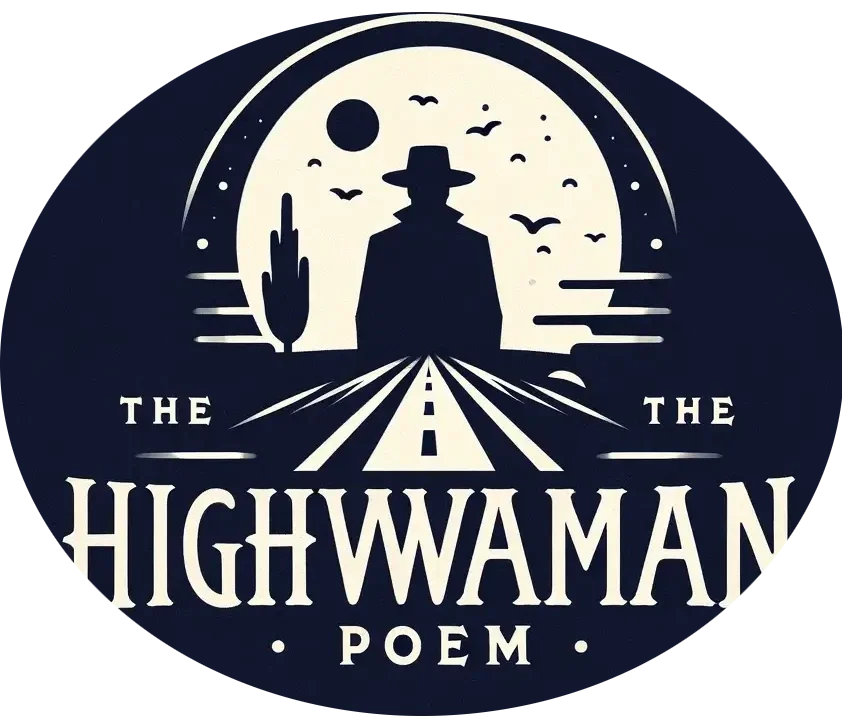Alfred Noyes, a luminary in the world of literature, is best known for his evocative poetry that captures the imagination and emotions of readers. One of his most celebrated works, “The Highwayman,” is a narrative poem renowned for its vivid imagery and dramatic storytelling. Among its many memorable lines, “The road was a ribbon of moonlight” stands out for its striking visual appeal and poetic beauty. This article delves into the background of Alfred Noyes, the literary devices employed in “The Highwayman,” and the broader context of his other writings, all while highlighting the significance of the iconic line.
Alfred Noyes: A Glimpse into the Poet’s Life and The Road Was a Ribbon of Moonlight
Born on September 16, 1880, in Wolverhampton, England, Alfred Noyes grew up in a period rich with literary and cultural influences. His early exposure to literature played a crucial role in shaping his future as a poet. Noyes attended Exeter College, Oxford, but left before completing his degree, driven by an overwhelming passion for writing. This decision marked the beginning of a prolific literary career.
Noyes’ body of work is diverse, spanning poetry, plays, and novels. His early poetry collections, such as “The Loom of Years” (1902), garnered critical acclaim and established him as a significant literary figure. Despite not completing his formal education, Noyes’ contributions to literature and his influence on subsequent generations of poets and writers remain profound.
“The Highwayman”: An Overview
“The Highwayman,” first published in 1906 in the collection “Forty Singing Seamen and Other Poems,” is one of Alfred Noyes’ most famous works. The poem tells the tragic love story of a dashing highwayman and his beloved, Bess, the landlord’s daughter. Set against the backdrop of 18th-century England, the poem weaves themes of love, sacrifice, and betrayal into a gripping narrative.
The line “The road was a ribbon of moonlight” exemplifies Noyes’ ability to create powerful imagery. This metaphor transforms the mundane image of a road into a mystical pathway, illuminated by the moonlight, setting the stage for the romantic and tragic events that follow.
Literary Devices in “The Highwayman”
Alfred Noyes employs a range of literary devices in “The Highwayman” to enhance the poem’s emotional impact and visual appeal. Below are some of the key devices used:
1. Imagery
Imagery is one of the most prominent features of “The Highwayman.” Noyes’ descriptive language paints vivid pictures in the reader’s mind. The line “The road was a ribbon of moonlight” is a prime example of visual imagery, evoking a serene and ethereal landscape. Such imagery immerses the reader in the poem’s setting, making the narrative more engaging and memorable.
2. Metaphor and Simile
Noyes frequently uses metaphors and similes to create deeper meanings and connections. The metaphor “a ribbon of moonlight” likens the road to a delicate, shining ribbon, emphasizing its beauty and the sense of journey. Similarly, other metaphors and similes throughout the poem enhance the reader’s understanding of the characters’ emotions and experiences.
3. Alliteration and Assonance
The use of alliteration and assonance contributes to the poem’s musical quality. Phrases like “Over the cobbles he clattered and clashed” use repetitive consonant sounds to create rhythm and movement, mirroring the galloping of the highwayman’s horse. This musicality makes the poem more enjoyable to read aloud and adds to its dramatic effect.
4. Personification
Personification is used to imbue inanimate objects with human characteristics, adding emotional depth to the poem. For instance, the wind is described as “a torrent of darkness among the gusty trees,” giving it a menacing presence that reflects the poem’s dark and foreboding mood.
5. Repetition
Repetition is a key technique in “The Highwayman,” used to emphasize important themes and create a rhythmic structure. The repeated line “A highwayman came riding, riding, riding” underscores the relentless nature of the highwayman’s journey and his unwavering determination to reach Bess.
The Broader Context of Alfred Noyes’ Work
While “The Highwayman” remains Noyes’ most famous poem, his literary oeuvre includes a wide range of works that showcase his versatility and skill as a writer.
Poetry Collections
Noyes’ early poetry collections, such as “The Loom of Years” (1902) and “The Flower of Old Japan and Other Poems” (1903), reveal his fascination with mythology, history, and nature. These works are characterized by their lyrical beauty and rich imagery, themes that persist throughout his career.
Epic Poems
In addition to shorter narrative poems, Noyes wrote several epic poems that explore historical and mythological themes. “Drake: An English Epic” (1908) is a notable example, celebrating the life and adventures of Sir Francis Drake. This poem reflects Noyes’ meticulous research and his ability to bring historical figures and events to life through verse.
Plays and Novels
Noyes also ventured into drama and prose, writing plays such as “Sherwood” (1911), which is based on the legend of Robin Hood, and novels like “The Return of the Scarecrow” (1929). These works demonstrate his narrative prowess and his ability to adapt different literary forms to tell compelling stories.
The Legacy of Alfred Noyes
Alfred Noyes’ contributions to literature extend beyond his individual works. His teaching at Princeton University from 1914 to 1923 influenced a generation of writers, and his advocacy for poetry as a vital form of artistic expression has had a lasting impact. Noyes believed in the power of poetry to convey profound truths and emotions, a belief that is evident in his own writing.
“The Highwayman” continues to be studied and admired for its artistic merits and emotional depth. The line “The road was a ribbon of moonlight” remains one of the most iconic examples of Noyes’ skill in creating evocative imagery. This line, and the poem as a whole, encapsulates the timeless appeal of Noyes’ work and his ability to transport readers to different times and places through the power of words.
Conclusion
Alfred Noyes’ “The Highwayman” is a testament to his mastery of poetic form and his ability to create lasting impressions through imagery and narrative. The line “The road was a ribbon of moonlight” serves as a perfect illustration of Noyes’ talent for transforming simple scenes into vivid, unforgettable moments. As readers and scholars continue to explore Noyes’ work, his contributions to literature will remain an enduring source of inspiration and admiration.

